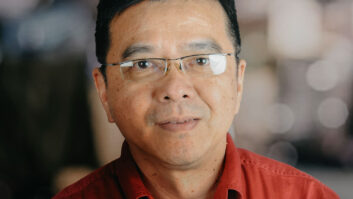 I’ve always thought that some of the best technology comes from the simplest ideas. That’s certainly the case with voice alarm/voice evacuation (VA/VE).
I’ve always thought that some of the best technology comes from the simplest ideas. That’s certainly the case with voice alarm/voice evacuation (VA/VE).
What could be more effective in an emergency situation than clear, straightforward instructions given in a calm, human voice to direct people out of a building and to safety? Compare that to traditional fire alarms. Granted, bells alert people to the fact that something is wrong but there is no way to give information about what is happening, what to do or where to go.
VA/VE equipment has developed and evolved considerably over the 30-plus years I have been involved in the VA/VE industry. During that time I have worked for several well-known VA and public address (PA) companies. I later set out to pioneer new technologies that would not only be fully featured but also affordable for smaller installations. A major advance in this has been the application of digital technology, which has played a key part in the product development at 4EVAC.
Expanded features
From what would now be regarded as relatively simple message storage and play-out systems, solutions have expanded to include features for selecting and monitoring where announcements are made and the precise operation/performance of the system itself. Such advances are neatly summed up by the acronym VACIE (voice alarm control and indicating equipment). This accurately describes what a modern VA/VE system has to deliver for safe and efficient management of an emergency situation.
“One of the greatest strengths of VACIE is that it is designed for the emergency services to use in a live and fast-changing situation”
Today, any building or enclosed area where people work or visit should have some form of alarm and evacuation system. This applies to offices, business premises and public buildings and spaces. There is also a renewed awareness of the need for similar emergency capability in residential apartment blocks following the 2017 Grenfell Tower fire and the subsequent public inquiry.
If we have learned anything from emergencies of the last five years, including the Bolton student accommodation blaze in November 2019, it is that fires are unpredictable. One of the greatest strengths of VACIE is that it is designed for the emergency services to use in a live and fast-changing situation.
Like many others involved in VA/VE, I have tried, sometimes in vain, to convince builders and building owners to install voice-based evacuation systems as standard. That task might become easier now there is more research into this area. A study published in the medical journal Pediatrics in 2018 looked at how 176 young patients from the Nationwide Children’s Hospital in Ohio aged between five and 12 years reacted to being woken up by a traditional sounder and a voice message. The results showed that voice alarms appeared more effective than high-pitched beeps. More than 90% of the children woke up on hearing the voice alarm message compared to just over 53% for the traditional alarm. Other research, quoted by the VA/VE consultancy BL Acoustics, found that only 13% of people responded to fire alarm bells in a timely manner. This figure increased to 73% when a voice alarm was used.
Ultimate aim
VACIE systems are no longer the preserve of large-scale, high-end installations. They can – and should – be available for buildings and businesses of any size, which is why 4EVAC has developed the Compact 500 and its more recent big brother, the IMPACT. Both are based on the ‘plug-and-play’ principle and are certified to multiple, stringent EN (European Standard) regulations.
My ultimate aim is to demystify the whole subject of VA. This should not be as difficult as it has been because the basic concept is very simple. It is a matter of using loudspeakers and pre-recorded or live announcements to tell people how to get to safety. But the predominance of installations based around rack rooms full of amplifiers and processors has clouded the issue. It has been further complicated by the thought that this hardware relies on complex software and operating systems to configure all the different aspects and parameters.
This should not be a barrier any longer. We live in a time when just about everyone carries a powerful computing and communications device in their pocket or bag. But very few think about the processing or connectivity involved in our smartphones. We think about what they can do and how they make our lives easier. If I can get people thinking about VACIE systems – or voice safety systems, as they should be known – in the same way it would be a significant achievement.







